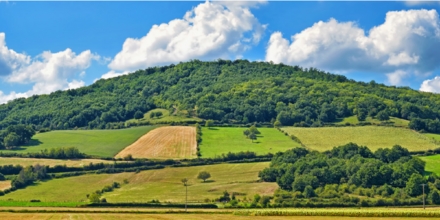Agriculture & Land Management
Our Work
Latest in Future of the CAP
-

CAP greening: what are its environmental prospects?
A significant injection of money was agreed for ‘green’ farming practices under the recent CAP reform. This report examines the environmental impact these measures are likely to have on the ground and concludes that Member States’ implementation choices appear to have much diminished the chances of the greening measures delivering significant additional environmental benefits.
-
High Nature Value farming throughout EU-27 and its financial support under the CAP
This study reviews Member States’ estimates of the extent of HNV farmland and use of RDP measures and the CMEF indicators, then identifies future priorities for CAP support for HNV farming and discusses the support opportunities under the reformed CAP. It offers detailed new evidence about the combined effect of Pillar 1 and Pillar 2 CAP payments on the economic and environmental viability of a typical HNV farming system in three Member States.
-
New report: High Nature Value Farming in the EU
Member States need to make the most of the opportunities under the new Common Agricultural Policy if the declines in HNV farming, critical for meeting our 2020 biodiversity targets, are to be halted.
-
A greener CAP: still within reach?
The greening of the CAP hangs in the balance in the final negotiations; a synthesis of key issues and requirements.
-
Delivering environmental benefits through entry-level agri-environment schemes in the EU
A new study of the 2007-13 agri-environment schemes across the whole of EU-27 provides the first typology of ‘entry-level’ agri-environment management and environmental objectives, plus a detailed insight into the design of entry-level agri-environment schemes and calculation of payment rates in seven Member States.
-
2014-2020 EU Multi-annual Financial Framework: Opportunities and Challenges for Climate Change and the Environment
This presentation analyses the Commission proposals on the 2014-2020 Multi-annual Financial Framework unveiled on 29 June 2011. More specifically, it identifies opportunities and challenges for the financing of climate change and the environment in the future EU budget.
Related
-

Debating the Future of The Common Agricultural Policy
The IEEP's platform to share thoughtful commentary and analysis on the future development of European agriculture and rural development policy.
Highlights
-

CAP greening: what are its environmental prospects?
A significant injection of money was agreed for ‘green’ farming practices under the recent CAP reform. This report examines the environmental impact these measures are likely to have on the ground and concludes that Member States’ implementation choices appear to have much diminished the chances of the greening measures delivering significant additional environmental benefits.
